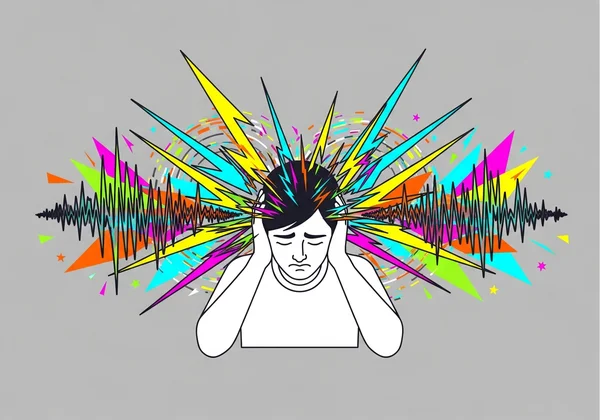Autism Test & Myths: Separating Fact from Fiction
Navigating the world of autism can be overwhelming, especially with so much misinformation circulating online and in society. Many people find themselves wondering about certain traits they observe in themselves or their loved ones, asking questions like, what are the early signs of autism? This uncertainty is often compounded by persistent myths that create confusion and stigma. Let's cut through the noise together. This article will separate fact from fiction, providing clear, evidence-based insights to help you understand what autism truly is. If you're seeking clarity, taking a preliminary Autism Test can be a helpful first step toward self-reflection. For a reliable starting point, you can explore our tool to gain initial insights.

Debunking Common Autism Stereotypes
Misconceptions about autism can be harmful, creating barriers to understanding and acceptance. By addressing these stereotypes head-on, we can foster a more informed and compassionate perspective. Let's dismantle some of the most prevalent myths.
Myth: Autistic People Lack Empathy
This is perhaps one of the most damaging stereotypes. The reality is that autistic individuals often experience empathy intensely, sometimes to an overwhelming degree. The difference lies in how empathy is processed and expressed. An autistic person might not show traditional signs of empathy, like immediate verbal reassurance or specific facial expressions, but they feel deeply for others. Their response might be more analytical or action-oriented, focused on solving the problem causing distress rather than offering conventional comfort. It's a difference in social communication, not a lack of feeling.
Myth: Vaccines Cause Autism
This myth has been extensively and conclusively debunked by decades of scientific research. Major global health organizations, including the Centers for Disease Control and Prevention (CDC) and the World Health Organization (WHO), have found no link between vaccines and autism. This misconception originated from a fraudulent study that has since been retracted. Autism is understood to be a neurodevelopmental difference with strong genetic components, with signs often appearing in early childhood, which happens to be the same period when children receive routine vaccinations. The timing is coincidental, not causal.
Myth: Autism is Only a Childhood Disorder
Autism is a lifelong neurodevelopmental condition. It does not disappear when a child grows up. However, many autistic adults go undiagnosed because awareness was lower in previous decades, or they developed sophisticated coping mechanisms known as "masking." Adults may seek an adult autism test after years of feeling different or struggling with social interactions, sensory overload, and executive function. Recognizing that autism affects individuals of all ages is crucial for providing the right support and validation throughout their lives.
Myth: All Autistic Individuals Are Savants
The "savant" stereotype, often popularized by movies, suggests that all autistic people have an extraordinary talent in a specific area, like mathematics, music, or art. While some autistic individuals do have these remarkable abilities, it is not a universal trait. Autism is a spectrum, and skills and challenges vary widely from person to person. Focusing on this stereotype creates unrealistic expectations and overshadows the diverse strengths and unique qualities that every autistic individual possesses, whether they are a savant or not.
Essential Autism Facts: What Science Tells Us
Now that we've debunked the myths, let's explore the reality of autism, guided by science and the neurodiversity movement. These facts offer a more accurate and respectful framework for understanding the autistic experience.

Fact: Autism is a Spectrum of Diverse Experiences
Autism Spectrum Disorder (ASD) is called a "spectrum" for a reason. There is no single way to be autistic. The condition affects communication, social interaction, sensory processing, and behavior in countless different ways. Some autistic individuals may be non-speaking, while others have extensive vocabularies. Some may require significant daily support, while others live independently. The phrase "If you've met one autistic person, you've met one autistic person" perfectly captures this diversity.
Fact: Autism is a Neurological Difference, Not a Disease
Viewing autism as a disease implies it is something to be cured or eliminated. The neurodiversity paradigm offers a more affirming perspective: autism is a natural variation in the human brain. It is a different way of thinking, learning, and experiencing the world. This viewpoint doesn't ignore the real challenges and disabilities that can accompany autism, but it frames them as a mismatch between a person's needs and their environment rather than an inherent flaw. The goal is support and accommodation, not a cure. If you're curious about where you might fall, an online autism test can offer a confidential starting point.
Fact: Autistic Individuals Experience Emotions Differently
Autistic people experience the full range of human emotions, but their expression and regulation can differ from neurotypical norms. Some may have difficulty identifying or naming their own emotions, a condition known as alexithymia. Others might express joy through hand-flapping (stimming) or distress through a shutdown or meltdown when overwhelmed. These are not signs of emotional deficiency but rather different, authentic ways of processing and communicating internal states.
What Life with Autism is Really Like
To truly understand autism, we must look beyond clinical definitions and listen to the lived experiences of autistic people. This provides invaluable insight into their daily reality.

Understanding Sensory Sensitivities and Preferences
Many autistic individuals have a different sensory processing system. They may be hypersensitive (over-responsive) or hyposensitive (under-responsive) to sights, sounds, smells, tastes, and textures. A fluorescent light that a neurotypical person barely notices might feel like a blinding spotlight to an autistic person. The tag on a shirt could be unbearably itchy. These sensory sensitivities can lead to overload and distress, making environments like busy supermarkets or loud concerts extremely challenging to navigate.
The Role of Masking and Camouflaging in Social Interactions
"Masking" or "camouflaging" is a common coping strategy where an autistic person consciously or unconsciously mimics neurotypical social behaviors to fit in. This can involve forcing eye contact, scripting conversations, or suppressing natural behaviors like stimming. While masking can help an autistic person navigate social situations, it is mentally and emotionally exhausting. It can lead to burnout, anxiety, and a diminished sense of self. Many adults who take an autism screening test later in life realize they have been masking for decades without knowing why.
Strengths, Challenges, and the Need for Affirming Support
Life with autism involves a unique blend of strengths and challenges. Many autistic individuals excel at pattern recognition, have a strong sense of justice, and possess deep, passionate interests. Their ability to think differently can lead to incredible innovation and creativity. However, navigating a world not designed for them presents significant hurdles. Affirming support—from family, educators, and society—is essential. This means providing accommodations, respecting communication differences, and valuing autistic individuals for who they are.
Beyond the Myths: Empowering Understanding and Next Steps
By moving beyond outdated stereotypes and embracing a fact-based, empathetic understanding of autism, we can create a more inclusive world. Knowledge is the first step toward acceptance and providing meaningful support. If what you've read resonates with your own experiences or those of someone you know, you might be considering what to do next.

An online screening is a private, accessible way to explore these traits further. It provides a structured way to reflect on your experiences and can offer a preliminary understanding. Remember, a screening is not a diagnosis, but it is a powerful tool for self-discovery. Are you ready to take a step toward clarity? Start your test today on our homepage to gain valuable personal insights.
Frequently Asked Questions About Autism and Screening
Are online autism tests accurate for screening?
Yes, for screening purposes. A high-quality online screening like the one on our site is based on scientifically validated questionnaires. It can accurately indicate the presence of autistic traits. However, it is not a formal diagnosis. Think of it as a reliable first step to help you decide whether to seek a professional evaluation.
What are the early signs of autism to look for?
In children, early signs can include delayed speech, limited eye contact, not responding to their name, repetitive behaviors like rocking or hand-flapping, and intense reactions to sensory stimuli. In adults, signs may be more subtle and can include difficulties in maintaining social relationships, intense special interests, a preference for routine, and sensory sensitivities.
Can you self-diagnose autism based on online information?
While self-diagnosis is a valid part of the journey for many in the autistic community, it cannot replace a professional assessment for accessing formal support or accommodations. Using resources like an autism spectrum test and reading about lived experiences can provide significant self-understanding, but a formal diagnosis requires a qualified clinician.
What does a high score on an autism screening test mean?
A high score suggests that you have a significant number of traits commonly associated with Autism Spectrum Disorder. It indicates that pursuing a formal evaluation with a healthcare professional, such as a psychologist or psychiatrist specializing in neurodevelopmental conditions, would be a logical and potentially helpful next step.
What should I do after taking an online autism test?
After completing an online screening, take time to process your results. Use them as a guide for further research and self-reflection. If your results indicate a high likelihood of autistic traits and you feel it would be beneficial, consider seeking a formal assessment from a qualified professional. You can bring your results from the free autism test to your appointment as a starting point for discussion.